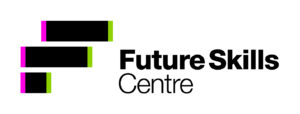
Mapping the Landscape: Indigenous Skills Training and Jobs in Canada
Series | Skills NextNews & Updates
- An Op-ed featured on Policy Options: Gaps in Indigenous education and skills training harm Indigenous business and overall economic growth. Better data are needed to address the problem.
-
Please watch the Speakers Series Roundtable with the authors and Stratejuste.
Key Takeaways
- 350,000 Indigenous youth will come of age by 2026, and now is the time for policymakers to address underemployment of skilled Indigenous workers and the lack of baseline essential skills amongst Indigenous youth and adults. If this cohort gets the support they need to build essential skills through access to quality, targeted, and culturally appropriate education, skills and training, they would boost the country’s economy by $27.7 billion annually.
- One study suggests that even at higher numeracy and literacy skill levels, First Nations people still have a significantly lower probability of employment (75 percent) than Métis (87 percent) or non-Indigenous (90 percent). Notably, even lower-skilled non-Indigenous people have a higher probability of employment than First Nations people (87 percent). Workplace bullying and discrimination causes some Indigenous peoples to leave employment.
Executive Summary
There is an unprecedented opportunity for Indigenous peoples to get ahead.
Between 2016 and 2026, 350,000 Indigenous youth will turn 15, the age at which they become potential members of the workforce.
However, for many reasons including chronic under-funding of quality on-reserve education, the challenge of acquiring reliable internet in remote conditions, and the myriad corollary effects of growing up in households disproportionately impacted by poverty and residential school syndrome, many Indigenous youth and adults do not graduate high school or graduate without requisite essential literacy and numeracy skills.
People need basic essential skills to get and keep good jobs, and to upskill as required in rapidly changing and increasingly digital workplaces. People missing these essential skills are missing their foundation, facing down the threat of job disruption due to automation, or being underqualified to gain workforce entry, without the tools they need to adapt and succeed.
If this cohort gets the support they need to build essential skills through access to quality, targeted, and culturally appropriate education, skills and training, they would boost the country’s economy by $27.7 billion annually. Failure in that endeavour would represent a lost opportunity for all. Successfully filling this skills gap holds the door open for new Indigenous employees and employers to realize their talent and potential.
So what could that boon look like if we examine Indigenous people’s prospects for future work? The numbers tell an important story: Between 2006 and 2016, the Indigenous population grew at four times the rate of the non-Indigenous population, though Indigenous peoples experience poorer socio-economic outcomes, higher unemployment rates and lower levels of education. Indigenous peoples cite a lack of jobs, education, training and prior work experience as reasons for unemployment.
This is not only a supply-side issue, however — even at higher numeracy and literacy skill levels, First Nations people have a significantly lower probability of employment (75 percent) than Métis (87 percent) or non-Indigenous (90 percent). Even lower-skilled non-Indigenous people have a higher probability of employment than First Nations people (87 percent). Workplace bullying and discrimination causes some Indigenous peoples to leave employment.
Despite the challenges presented by the underemployment of skilled Indigenous workers and by a lack of baseline essential skills amongst Indigenous youth and adults, there are many bright spots on the horizon. Indigenous businesses are growing and creating employment, and self-employment and entrepreneurship are both increasing.
Indigenous firms are major employers of Indigenous people. However, these firms are often in sectors that face disruption. Business operators cite unfavourable business climates on reserves, and would-be Indigenous entrepreneurs have cited difficulties accessing capital. Gaps in Indigenous education and skills-training presents both a labour and business problem — Indigenous firms say finding capable staff is difficult, and growth is threatened if action is not taken to upskill prospective workers.
Indigenous skills training programs need the following to reach their fullest potential:
- an ability to support youth through earlier intervention and pre-employment training;
- programming for clients to upgrade essential skills before they reach pre-employment training; and
- affordable, accessible childcare
Other studies have shown that the likelihood of success increases when training is culturally appropriate, engaging in land-based training and including wrap-around supports. Meanwhile, current federal skills and training programs are flawed: one independent study found that data was not collected on program success, rendering the most effective programs no more likely to be supported or renewed than the least.
We also need clarity on what labour market data is most useful to Indigenous business operators, policy makers, and workers. Some studies say that Indigenous community organizers lack enough Indigenous labour market data to plan programs and services. Others reach opposite conclusions, citing a wealth of Aboriginal labour market information. Evidence-driven policy requires good data, and we recommend investment in understanding the nature of Indigenous labour market data gaps.
Thanks to our partners
 |
 |








